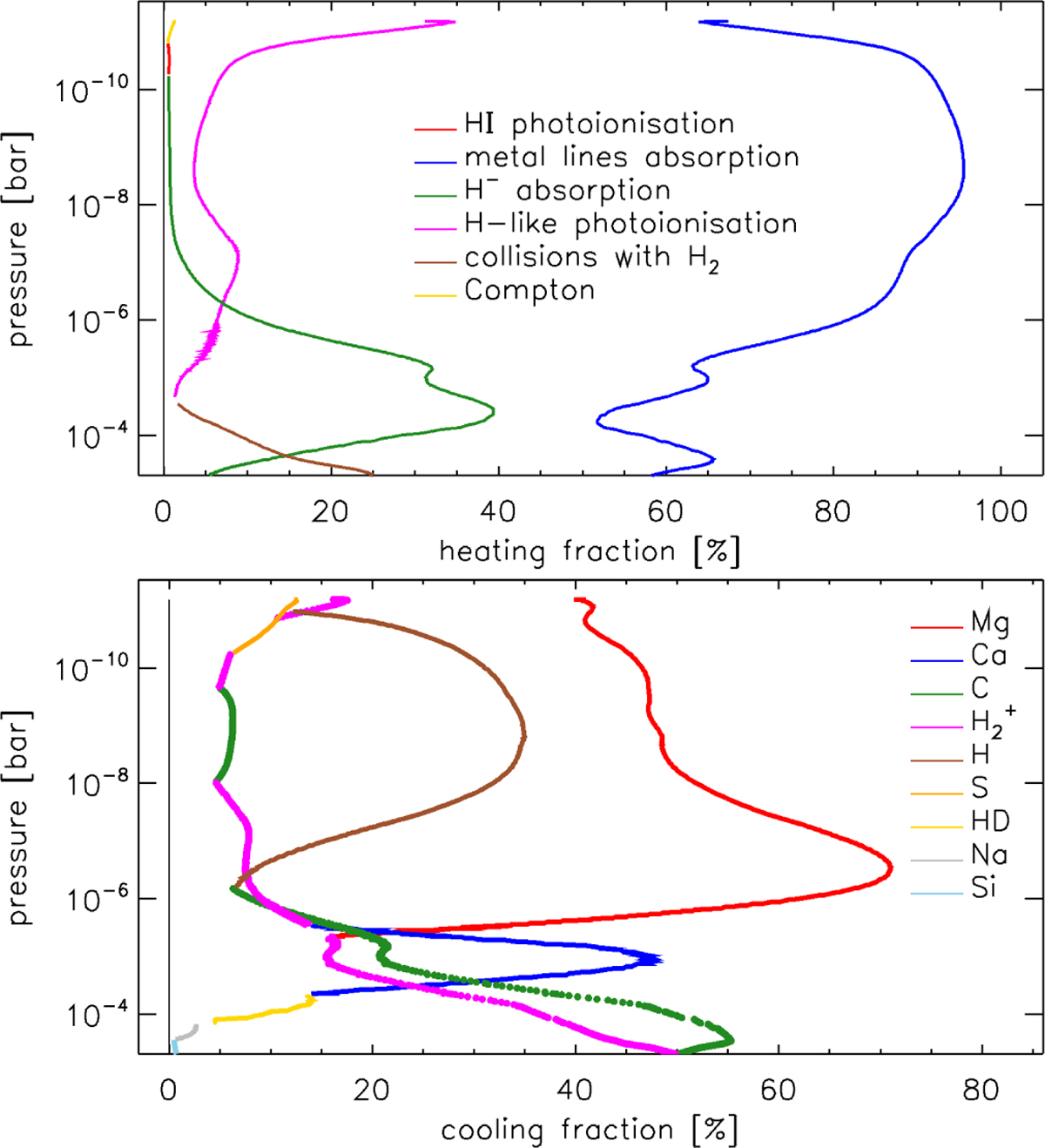Fig. 4

Download original image
Heating and cooling contributions in the middle and upper atmosphere (i.e. at pressures lower than CLOUDY’s density limit) of WASP-178b. Top: Contribution to the total heating as a function of pressure. At each pressure bin, the plot shows the three most important heating processes. The main heating processes are hydrogen photoionisation (red; photoionisation of HI lying in the ground state), metal line absorption (blue), H− absorption (green), photoionisation of hydrogenic species (magenta), collisions with H2 (brown), and Compton heating (i.e. electron absorption; yellow). Bottom: Contribution to the total cooling as a function of pressure. At each pressure bin, the plot shows the three most important cooling agents. The main cooling agents are Mg (red), Ca (blue), C (green), ![]() (magenta), H (brown), S (orange), HD (i.e. hydrogen deuteride; yellow), Na (grey), and Si (light blue). Metal line absorption (primarily from FeII) and Mg line emission are the primary heating and cooling mechanisms, respectively.
(magenta), H (brown), S (orange), HD (i.e. hydrogen deuteride; yellow), Na (grey), and Si (light blue). Metal line absorption (primarily from FeII) and Mg line emission are the primary heating and cooling mechanisms, respectively.
Current usage metrics show cumulative count of Article Views (full-text article views including HTML views, PDF and ePub downloads, according to the available data) and Abstracts Views on Vision4Press platform.
Data correspond to usage on the plateform after 2015. The current usage metrics is available 48-96 hours after online publication and is updated daily on week days.
Initial download of the metrics may take a while.


